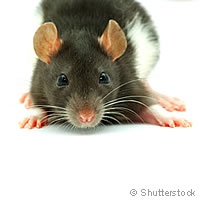How the mind creates multiple maps for movement
A team of Norwegian researchers carried out experiments on rats to throw light on how the brain creates the mapping system that helps us move around and get from one place to another easily. Their study, published in the journal Nature Neuroscience, found that maps are created by the brain and are then 'stitched' together by a mind-mapping mechanism, allowing for navigation with the minimum of effort. How does a human being find his or her way around in everyday life? In an average day most of us move about a good deal, but we don't think about how we get from one place to another. Now scientists at the Norwegian University of Science and Technology (NTNU) have discovered in experiments with rats that their minds constantly create multiple independent maps that enable them to navigate their way through each new place. The researchers say that the findings in rats are likely to be true of the human brain too. Four years ago, a research team at NTNU's Kavil Institute for Systems Neuroscience used grid cells in a coordinate system to make a breakthrough in discovering how the brain creates new maps for new situations. Now, new research carried out by Dr Dori Derdikman and colleagues from the same team has discovered a completely new aspect of the logistics of brain mapping. The researchers found that the human brain constantly makes a series of new maps, some highly detailed, others more basic. They also discovered that the brain has an 'advanced sorting system' to classify these maps. The team had wondered for a long time 'if all of the brain's mapping information was stored in a single map', Dr Derdikman says. 'So we figured out a way to check this.' The researchers carried out experiments by observing laboratory rats as they wandered through a small open compartment. When the rats were first put into the compartment, the researchers measured their brain activity. The measurements created a map which corresponded to how the grid cells of the rat had measured out the area. Once the researchers saw clearly how the rats' 'mental map' looked, they changed the layout of their compartment by inserting walls into it to create a maze with hairpin turns. 'When the walls were inserted something happened with the rats' maps,' said Dr Derdikman. 'First we recorded the same map. But when the rats came around a hairpin turn in the maze, the map changed totally. It happened several times, each time in connection with when the rats went round a wall and came into a new corridor.' The research showed that when the rats were confronted with a new space, their mental maps changed to allow them to navigate it. It became clear that a whole series of maps was created by the rats and were then 'stitched together' by a mapping mechanism in their brains. The researchers say that the way this mapping system works is likely to be the same in human beings too. It was clear to the research team that it was the physical environment that triggered the creation of a new map, not learned behaviour. A recently discovered type of cell called border cells may be the answer to the rats' map changes as border cells seem to be responsible for defining in the brain where one environment ends and another begins. 'Maybe these border cells are what signal the brain to switch maps when you move over a border in your environment,' said Trygve Solstad, a member of the research team. 'We think that there is this kind of environmental change when the rats enter a new corridor in the hairpin maze.' Now, further research needs to be undertaken to ascertain this hypothesis.
Countries
Norway



